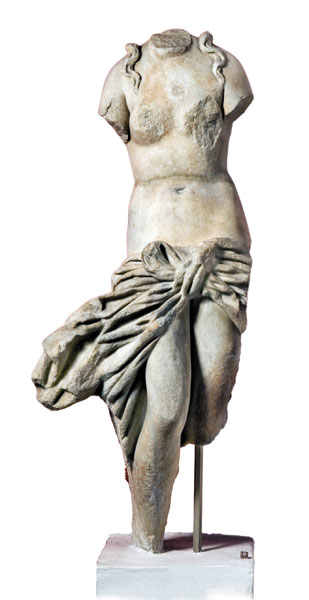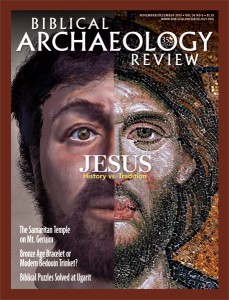
Highlighting the Smithsonian galleries at the Museum of Natural History this winter and spring is Cyprus: Crossroads of Civilizations, an exhibit showcasing the eclectic art and varied cultures of the small island nation of the eastern Mediterranean that straddles the Aegean and Near Eastern worlds.
The exhibit features more than 300 objects spanning 11,000 years of Cypriot history, from the stone tools of the first Neolithic villages to the beautiful religious icons of the island’s medieval Christian community. Many of the artifacts, including gold jewelry and sculptures from Cyprus’s Iron Age kingdoms (1300–300 B.C.E.), as well as several beautifully sculpted marbles from the Greco-Roman period (310 B.C.E.–330 C.E.), are being displayed in the U.S. for the first time.
Among the marbles being exhibited is this nearly 4-foot-tall headless and defaced statue of the goddess Aphrodite found at the ancient harbor city of Salamis in eastern Cyprus. According to Greek myth, Aphrodite, the goddess of love, was born in Cyprus, from the foam of the waves that washed up on the island’s shores.
Through May 1, 2011
Smithsonian National Museum of Natural History
Washington, DC
www.mnh.si.edu
Already a library member? Log in here.
Institution user? Log in with your IP address.

